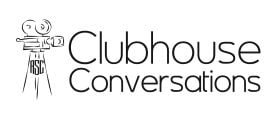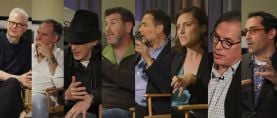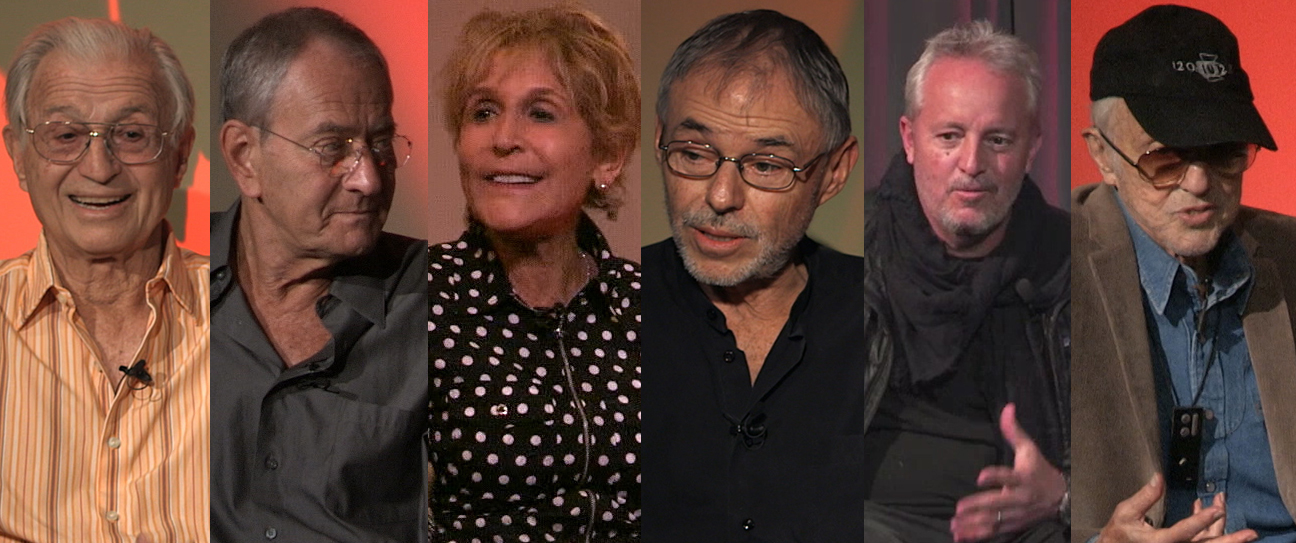
ASC Breakfast Club 2014 Video Collection
In-depth live interviews at the ASC clubhouse with ASC members Owen Roizman, John Toll, Victor J. Kemper, Haskell Wexler, Nancy Schreiber and Checco Varese.
These videos are exclusive to Friends of the ASC.
The ASC Breakfast Club is a series of in-depth interviews conducted in front of a live audience in the Society's historic Clubhouse. ASC members share their inspirations and experiences while analyzing their own work and offering an informative look at their decision-making process.
2014 Breakfast Club participants: Owen Roizman, John Toll, Victor J. Kemper, Haskell Wexler, Nancy Schreiber and Checco Varese.
Previous Collections
2020 | 2019 | 2018 | 2017 | 2016 | 2015 | 2014 | 2013 | 2012 | 2011
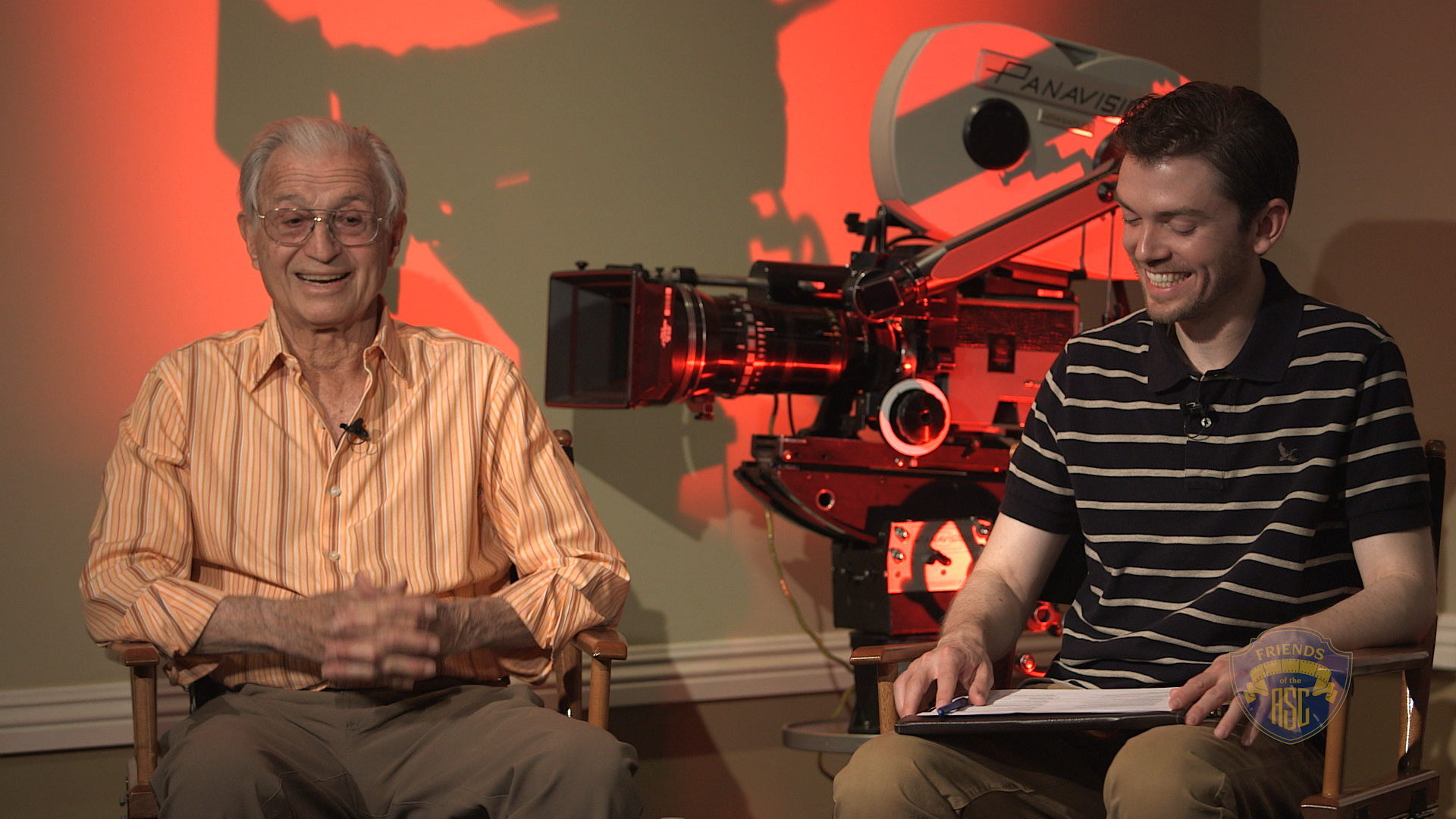
Kemper retraces the journey that led to his career behind the camera, sharing lessons learned from his mentor, Arthur Ornitz, ASC, discusses his minimalist approach to lighting a night exterior and day interior for The Friends of Eddie Coyle, discusses his minimalist approach to lighting a night exterior and day interior for Dog Day Afternoon, explains how he and the crew laced up their skates and took to the ice to place the camera in the midst of the madcap hockey action of Slap Shot, and reveals the tools he employed while working on location with director Richard Attenborough. He takes questions regarding working with multiple cameras and making Pee-wee’s Big Adventure, about breaking in, climbing the ranks and making memorable blunders.
- Early Gambles
- The Friends of Eddie Coyle
- Dog Day Afternoon
- Shooting Slap Shot on Ice
- The Tricks Behind Magic
- Q&A 1
- Q&A 2
A native of New Jersey, Victor J. Kemper, ASC graduated from Seton Hall University and started his career at a commercial TV station, running the lighting, mixing sound, and serving as technical director. That led to a job with commercial house EUE, where Kemper met Arthur Ornitz, ASC. Kemper worked as an assistant and operator before notching his first feature cinematography credit on Husbands. He then went on to shoot such features as The Hospital, The Candidate, Dog Day Afternoon, Slap Shot, Eyes of Laura Mars, The Jerk, The Final Countdown, Pee-wee’s Big Adventure, Clue and Tommy Boy. He was nominated for an Emmy and an ASC Award for the telefilm Kojak: The Price of Justice, and in 1998, the Society presented Kemper with its Lifetime Achievement Award.
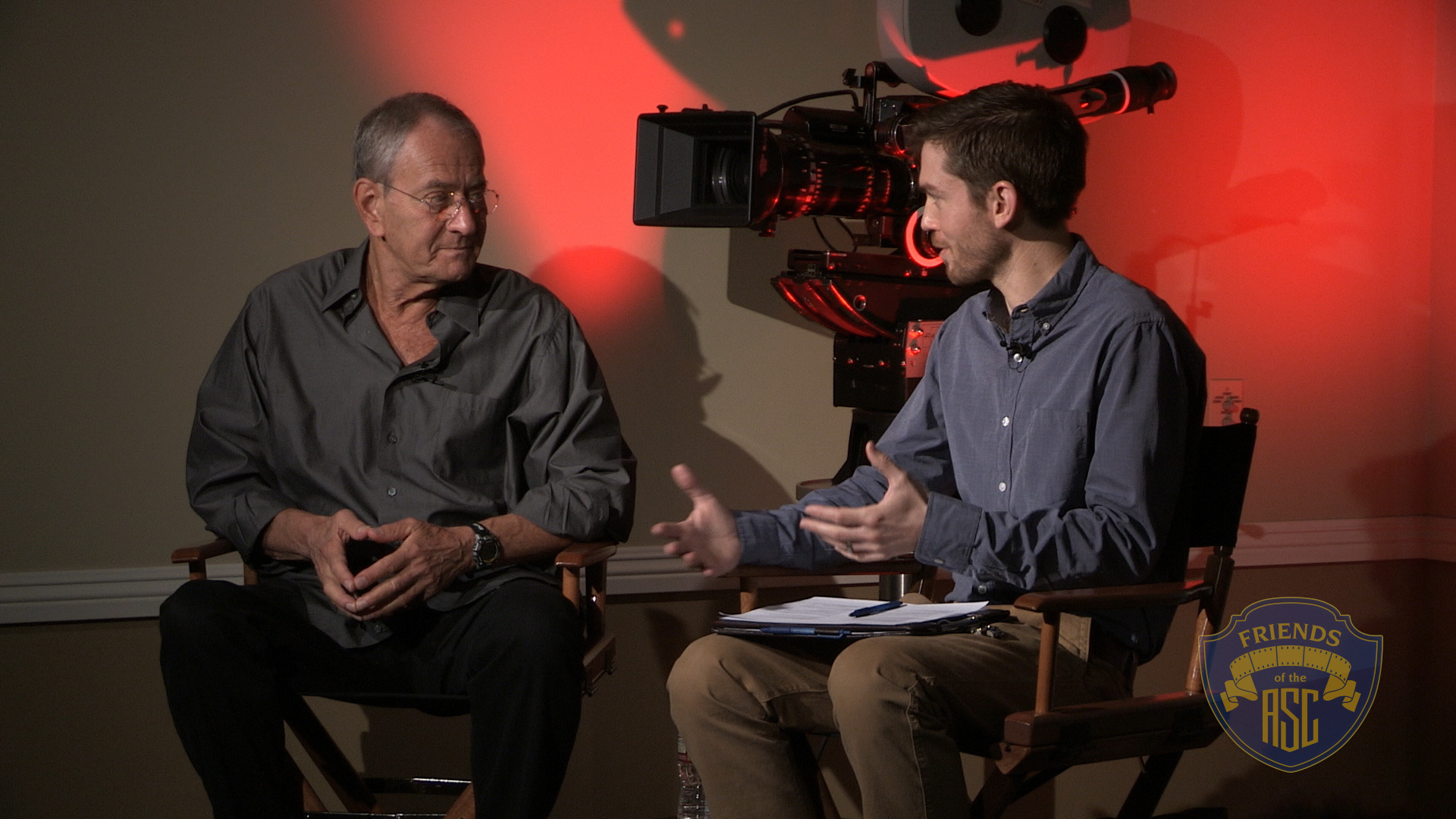
Roizman traces his journey from a tryout with the Yankees to his first jobs as a director of photography, and stresses, “If you want to learn your art, you have to learn the craft first.” He discusses his early penchant for force-developing his negative while analyzing his work on The French Connection, points out the challenges presented by a night exterior in D.C. and explains how his collaborations with the production designer and gaffer saved the day. shooting Three Days of the Condor, details the complications posed by shooting on location inside the MGM Building in New York while keeping pace with director Sidney Lumet on Network, and discusses the director-cinematographer relationship, citing his multi-picture collaboration with Lawrence Kasdan as an example while revealing how he lit a convincing day interior on stage for Grand Canyon.
Roizman explains how he adapted his lighting to maintain continuity after it started to rain in the middle of filming a night exterior, and takes questions from the Breakfast Club audience on whether he used visual references and worked with multiple cameras, his most difficult shot, what he would look for in an operator, actors’ eyelines, the influence of other cinematographers, and changes in filmmaking.
- Learning the Craft
- Filming The French Connection
- On Location for Three Days of the Condor
- The Unique Challenges of Network
- Grand Canyon
- A Change of Plans on Wyatt Earp
- Q&A 1
- Q&A2
The son of cameraman Sol Roizman, Owen Roizman, ASC grew up in Brooklyn, New York, where he dreamt of becoming a baseball player. He began working for a camera rental house during his summers, and after studying physics and math in college, he decided to find employment as a camera assistant. This in turn led to work as an operator, and Roizman then notched his first director of photography credits on the features Stop (which was never released) and The French Connection. He was nominated for an Academy Award for his work on the latter, and was again nominated for his work on The Exorcist, Network, Tootsie and Wyatt Earp. In 1997, the ASC presented Roizman with its Lifetime Achievement Award.
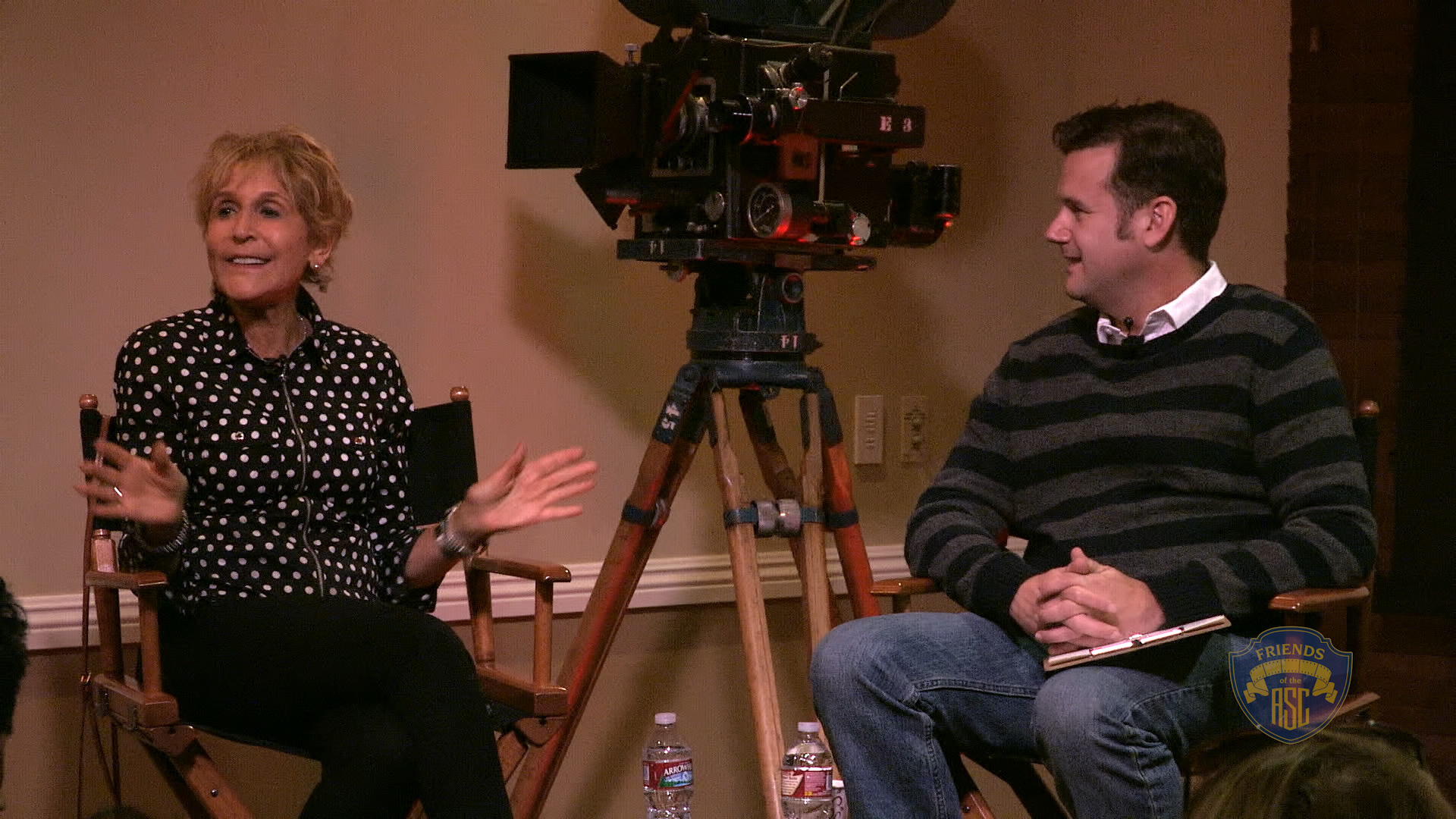
Schreiber discusses how running a movie theater for a local film society in Ann Arbor, Mich., sparked her love of movies and how she landed her first production job, details how she approached the indie November, one of the first features shot on MiniDV, and how she navigates the rapidly evolving world of digital cameras. She explains some of the tricks she uses to add production value to low-budget features, recalls the challenges of her first Red One shoot: the feature Every Day, describes shooting the indie Between Us on location in Los Angeles over 15 days, and addresses the subjects of storyboards, how she assembles a crew on low-budget projects, how she chooses lenses for a given project, and discusses shooting the acclaimed documentary Visions of Light, as well as what’s in her typical lighting package.
A native of Detroit, Mich., Nancy Schreiber, ASC, came up through the ranks as an electrician and gaffer on commercials, documentaries and independent features. She was the fourth woman to become an ASC member. Her credits include the acclaimed documentaries Visions of Light and Celluloid Closet; the HBO series The Comeback; and the features Between Us, The Nines, Your Friends & Neighbors, Lush Life and American Gun. She won cinematography awards at the Sundance Film Festival for November and My America … Or Honk If You Love Buddha, and she has also been honored with a Kodak Vision Award by Women in Film.
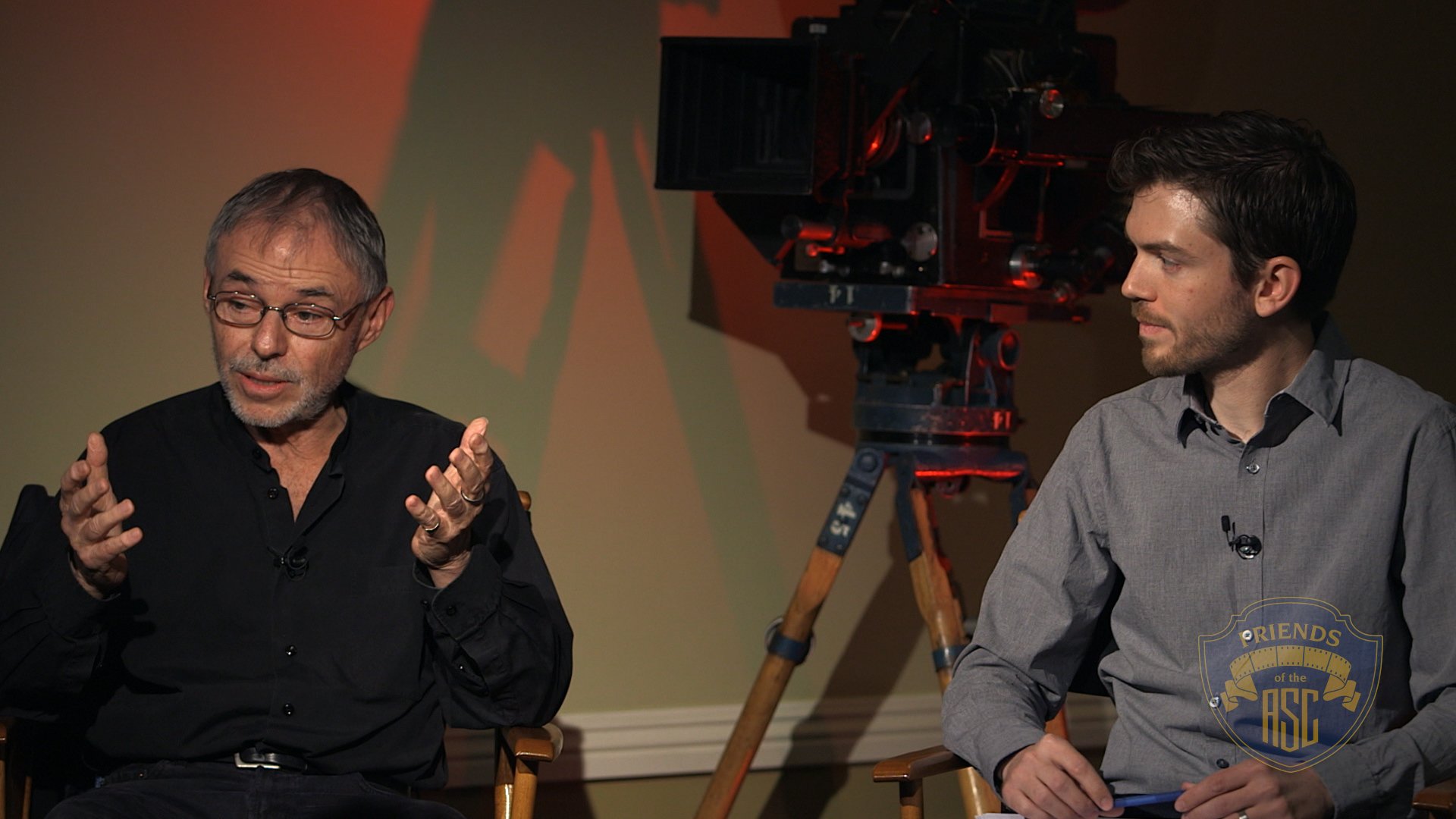
Toll recounts how he “stumbled into” a career in the film industry and climbed the ranks of the camera department, details the steep learning curve he faced while shooting at sea for his first feature film Wind, discusses director Terrence Malick’s improvisational approach, and explains how they utilized the Akela Crane to navigate the uneven terrain they faced in northern Australia on The Thing Red Line, and shares his approach to Almost Famous' 1970s rock stardom.
Using The Adjustment Bureau as an example, Toll emphasizes the importance of a close collaboration between the cinematographer and visual-effects supervisor, then takes questions from the Breakfast Club audience regarding Braveheart, Legends of the Fall and more.
John Toll, ASC rose up through the ranks as an assistant and operator — working with such ASC members as Jordan Cronenweth, Conrad L. Hall and Allen Daviau — before shooting his first feature film, Wind (1992). He then earned back-to-back Academy Awards for his work in Legends of the Fall (1994) and Braveheart (1995), and was later nominated for The Thin Red Line (1998). He recently completed the second season of the sci-fi series Sense8 and the feature Billy Lynn's Long Halftime Walk.
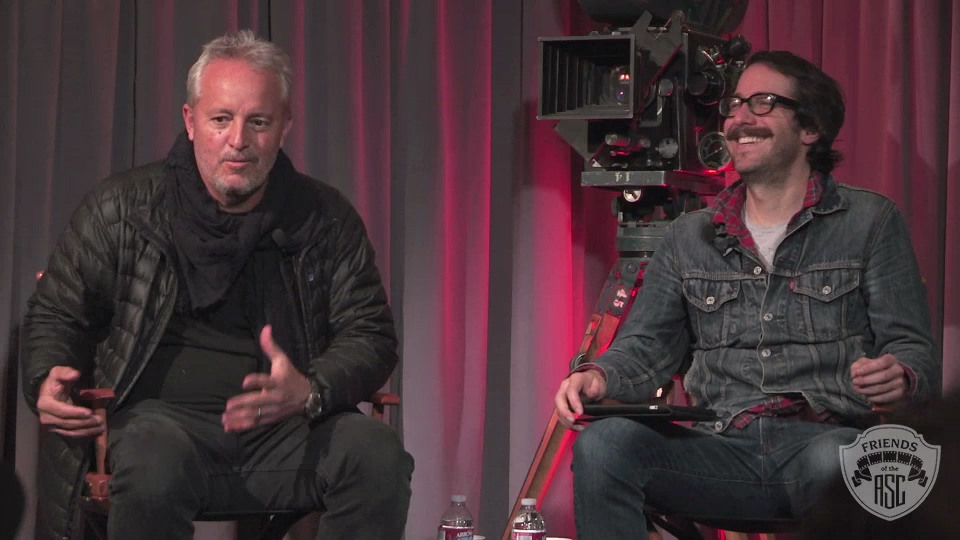
Varese sketches his professional background, which involved training as an architect, working as a translator, and serving as CNN’s first cameraman in El Salvador, discusses how he and Guillermo Del Toro approached the pilot for the supernatural series The Strain, breaks down the visual approach to the suspenseful opening sequence of The Strain, and details his lighting of the Harlem pawnshop, one of the show’s key locations. and why he fought for a specific lighting effect in the set for the Stoneheart Group, the villains in The Strain. He describes how he lit the airplane interior as a medical team investigates what happened, the challenges of introducing The Master, a vampiric creature that required a mix of prosthetics and CGI, and details his visual approach to the morgue, another key practical location in The Strain.
- Introduction
- Devising a Look
- Opening Sequence
- The Pawn Shop
- Creating "Pitch Black"
- Picking Battles
- The Master
- The Morgue
Born in Peru, Checco Varese, ASC, AMC, began his career shooting television news and documentaries for broadcast networks. In the mid-1990s he established himself as a leading director of photography, shooting hundreds of music videos, including the Dave Matthews Band’s “Crash” and Prince’s “Black Sweat,” for which he was nominated for an MTV Video Music Award. His cinematography credits include the upcoming feature The 33, as well as the TV projects The Strain, Point of Honor, Reign and Their Eyes Were Watching God, and the features The Aura and La Misma Luna.

Wexler reveals how he caught “the cinematography bug” as a youth in Chicago and discusses his first paying job, his philosophy about documentary filmmaking, noting, “You don’t get what you want; you want what you get.”, and recalls his work on Mike Nichols’ Who’s Afraid of Virginia Woolf? and how he approached his acceptance speech at the Academy Awards. He discusses the genesis of Medium Cool, a fiction/nonfiction hybrid that he wrote, directed and shot in Chicago during the tumultuous summer of 1968, and recalls how a shot in the Russian film The Cranes Are Flying helped inspire some of the camerawork in Bound for Glory, which marked the first use of a Steadicam in a motion picture.
Wexler also discusses the film industry’s dangerous practice of long work hours, the subject of his documentary Who Needs Sleep?, and the ASC’s emphasis on character and how this translates into behavior on the set.
- Starting Out
- Documentary Filmmaking
- Who's Afraid of Virginia Woolf?
- Medium Cool
- Bound for Glory
- Dangerous Labour Practices
- The ASC and Character
Born in Chicago in 1922, Haskell Wexler, ASC, is one of the most influential cinematographers in film history. In a career that has spanned six decades, he has received five Academy Award nominations, winning the prize for Who's Afraid of Virginia Woolf? (1966) and Bound for Glory(1976). Medium Cool (1969), a fiction/nonfiction hybrid that he wrote, directed and photographed, is considered a landmark in American film. His feature credits also include In the Heat of the Night (1967), The Thomas Crown Affair (1968), Coming Home (1978), Matewan (1987), Blaze (1989) and Who Needs Sleep? (2006). He received the ASC Lifetime Achievement Award in 1993.
